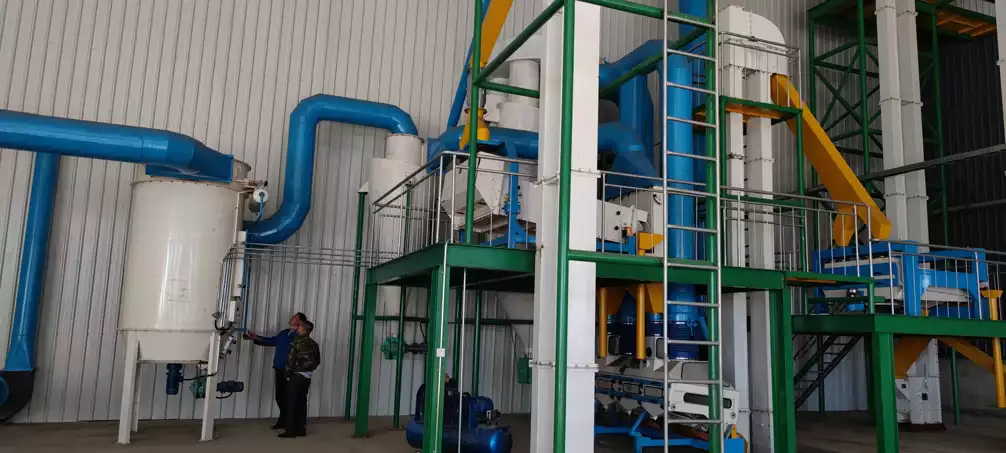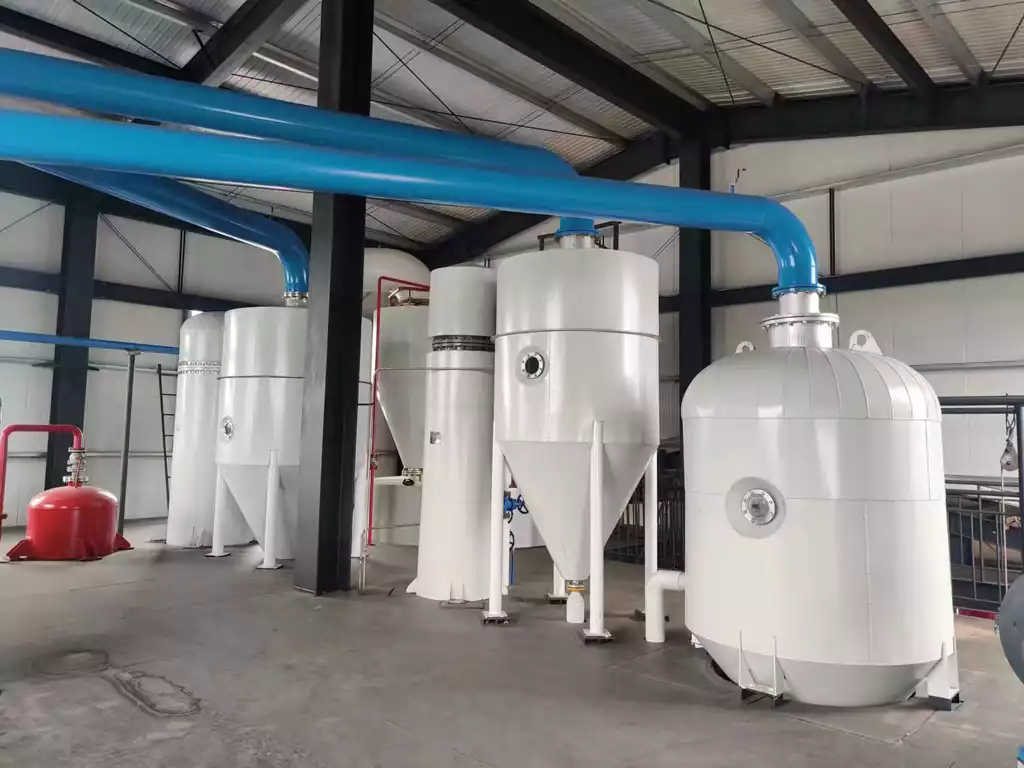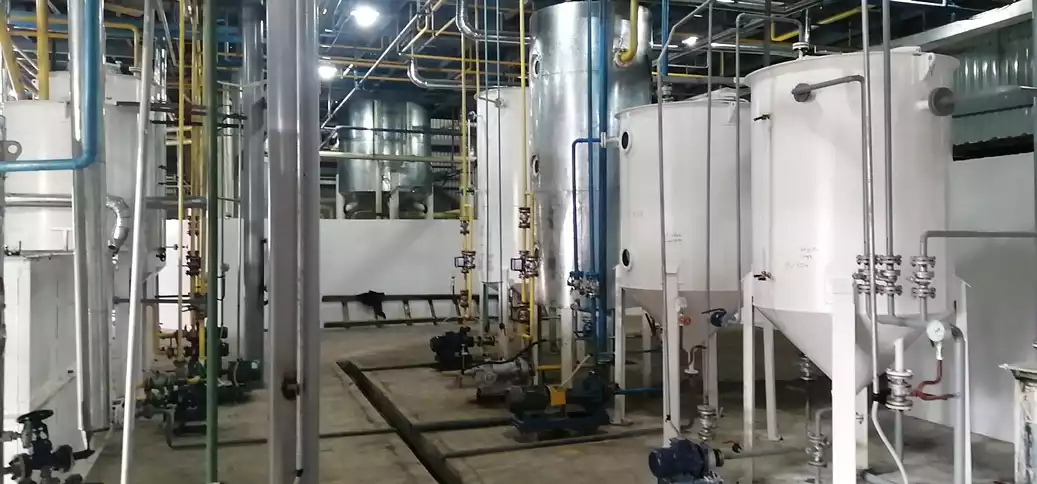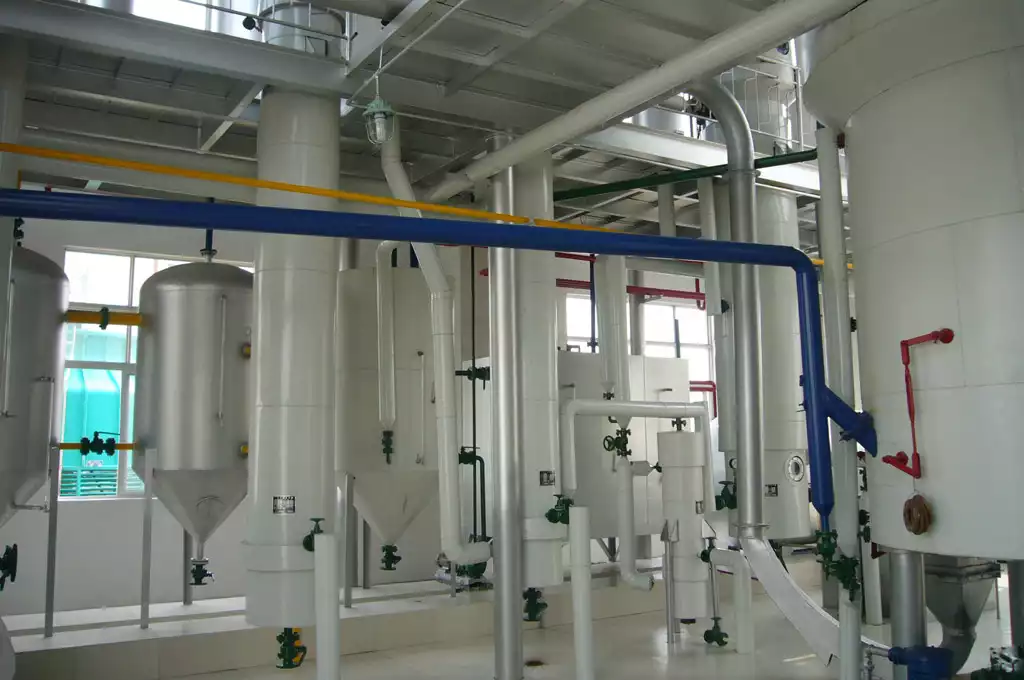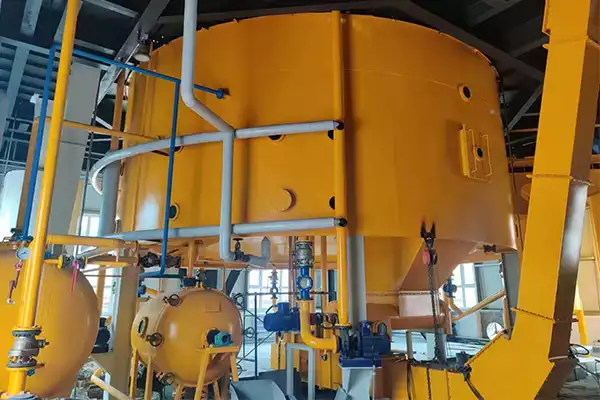
Solvent Extraction of Groundnut Oil Process
The solvent extraction of groundnut oil is a traditional peanut oil production process and one of the most common methods. It extracts the oil from groundnuts by crushing them into smaller particles and then soaking them in a solvent. Commonly used solvents include hexane, petroleum ether, e chloroform.
The solvent extraction process of groundnut oil can be divided into the following steps: pretreatment of groundnut fragments, soaking, separation, and desolventization.
- Groundnut Fragments Pretreatment
First, the groundnut fragments must undergo a preliminary treatment. This includes removing impurities and breaking up the groundnut particles. This is to improve the leaching efficiency of the oil.
- Groundnut Particles Soaking
Próximo, after the groundnuts have been pretreated, place them in a soaking facility and add a solvent. The solvent penetrates the cell walls in the groundnut particles while dissolving the oils in the groundnuts. The choice of solvent is very important as it needs to have enough solvency to effectively extract the oils and fats, but not negatively affect the oils and fats.
The soaking time is usually long to ensure that the oils and fats in the groundnuts are completely extracted. During the soaking process, the concentration of oil in the solvent gradually increases. The length of soaking time affects the extraction rate and quality of the oil. (Leia mais: solvent oil extraction >>) - Groundnuts and Solvent Separation
Então, after the end of soaking, separate the soaked groundnuts and the solvent. This is usually achieved by treatments such as sedimentation, centrifugation, filtração, and distillation. During the separation process, separate the solvent is for recovery and reuse.
- Groundnuts Oil Desolventization
Finally, the step is desolventization. This is to remove residual solvents from the extracted groundnut oil. Desolventization is generally done by distillation. During distillation, the solvent is heated so that it changes to a gaseous state and evaporates from the oil. This results in pure groundnut oil.
Solvent Extraction of Groundnut Oil Advantages
- The groundnut oil extracted by this method is pure and has a good flavor.
- It can extract the oil efficiently and increase productivity.
- The method can be used in plants of different sizes and is suitable for both mass production and small-scale production.
Solvent Extraction of Groundnut Oil Disadvantages
- The peanut oil solvent extraction requires the use of solvents, which may generate environmental pollution during the extraction process.
- The desolventization process requires energy consumption and has some process complexity.
Conclusão
Overall, solvent extraction of groundnut oil is a widely used method in peanut oil production. It efficiently extracts oils and fats from groundnuts through the process of soaking and separation and obtains pure groundnut oil through desolventization. Despite some drawbacks, this method is still a well-established process. Huatai Oil Machinery can provide complete groundnut oil production lines of various sizes. If you want to know more, please contact us at 0086-159-3728-9608.
Obtenha seu melhor preço
- Citação rápida do engenheiro
- A velocidade geral de entrega é rápida
- Escolha financeira
- Baixos custos de instalação e economia de custos
30 years+ of oil mill plant R&D
Mais do que 56 tecnologias inovadoras

